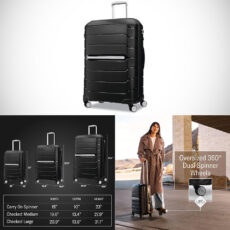
Amazon’s warehouses can now be described as a wild dance of robotic arms and zippy bots weaving through aisles, sorting packages with a precision that’s almost eerie. As of July 2025, the online retail giant has rolled out over a million robots across its global web of fulfillment centers, nearly neck-and-neck with its 1.56 million human workers.
This robot takeover didn’t just happen. It kicked into high gear back in 2012 when Amazon scooped up Kiva Systems, whose chunky orange bots changed the game for moving goods inside warehouses. From 200,000 robots in 2019 to 520,000 in 2022, they’ve now blasted past a million. Heavy-hitters like Hercules, lugging massive shelves, and Sparrow, a quick-handed arm grabbing 65% of Amazon’s huge inventory, run the show.
- Due to platform compatibility issue, the DJI Fly app has been removed from Google Play. DJI Neo must be activated in the DJI Fly App, to ensure a...
- Lightweight and Regulation Friendly - At just 135g, this drone with camera for adults 4K may be even lighter than your phone and does not require FAA...
- Palm Takeoff & Landing, Go Controller-Free [1] - Neo takes off from your hand with just a push of a button. The safe and easy operation of this drone...
Amazon swears it’s a team effort, not a takeover. “Our robots work hand-in-hand with our crew, tackling the boring, repetitive stuff to make things faster and safer,” Aaron Parness, Amazon Robotics Director, told CNBC. Take Vulcan, launched in 2025 with a “sense of touch” that lets it handle 75% of the million unique items in a typical warehouse. Rolling in Spokane, Washington, and Hamburg, Germany, Vulcan can pick up fragile stuff without workers climbing ladders or twisting into pretzels.
The human count’s dipped from 1.6 million in 2021 to 1.56 million now, with warehouses averaging 670 workers—the lowest in almost 20 years. Meanwhile, bots like Sequoia keep inventory tight, and Digit, a two-legged wonder from Agility Robotics, shuffles empty bins with creepy skill. CEO Andy Jassy didn’t sugarcoat it: in a staff letter, he said AI and robots will “need fewer folks for some jobs.” The numbers don’t lie—efficiency’s soaring, human hours are shrinking.

Walk into a place like BDL4 in Windsor, Connecticut, and you’ll see the action unfold. Workers hustle alongside blue Hercules bots, moving like a high-tech dance crew. Allison Kim, a senior ops manager, leads tours with a shiny gold toy mic, her voice rising above the mechanical hum. It feels upbeat, but there’s an edge: automation doesn’t quit. A 2023 University of Illinois study flagged that 41% of Amazon warehouse workers have been injured, with nearly 70% taking unpaid leave to heal. OSHA’s called out high-risk conditions, hinting robots might be replacing workers more than relieving them.
Amazon’s dreaming bigger than warehouses. In San Francisco, a coffee-shop-sized “humanoid park” is training robots to hop out of Rivian electric vans and drop packages at your door. The Information says this last-mile push uses AI to tackle messy city streets. It’s a gutsy move, but most humanoid robots are better in controlled spaces than dodging New York’s chaos. Still, Amazon’s full speed ahead.
They claim robots are job creators, pointing to gigs in maintenance and coding. Tye Brady, Amazon Robotics’ chief technologist, told WIRED that cloud-linked bots share smarts across the network, leveling up fast. But not everyone’s buying it. A leaked Business Insider document showed plans to “flatten hiring” over the next decade, saving billions with robots. Amazon’s track record—tough conditions and anti-union vibes—makes folks doubt worker well-being is the goal.
[Source]













